Non-Hodgkin Lymphomas
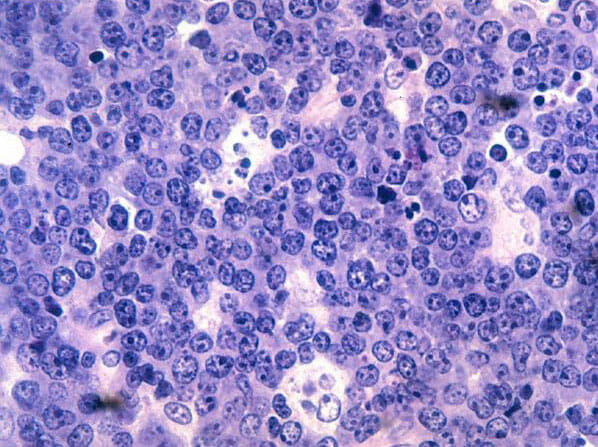
Overview Definition Non-Hodgkin lymphomas (NHLs) are a diverse group of hematologic malignancies that are clonal proliferative disorders of mature or progenitor B cells, T cells, or natural killer (NK) cells. Epidemiology Incidence in the United States: > 70,000 cases annually (6th most common cancer in the United States) Accounts for 4% of all cancers: The […]
Sickle Cell Disease
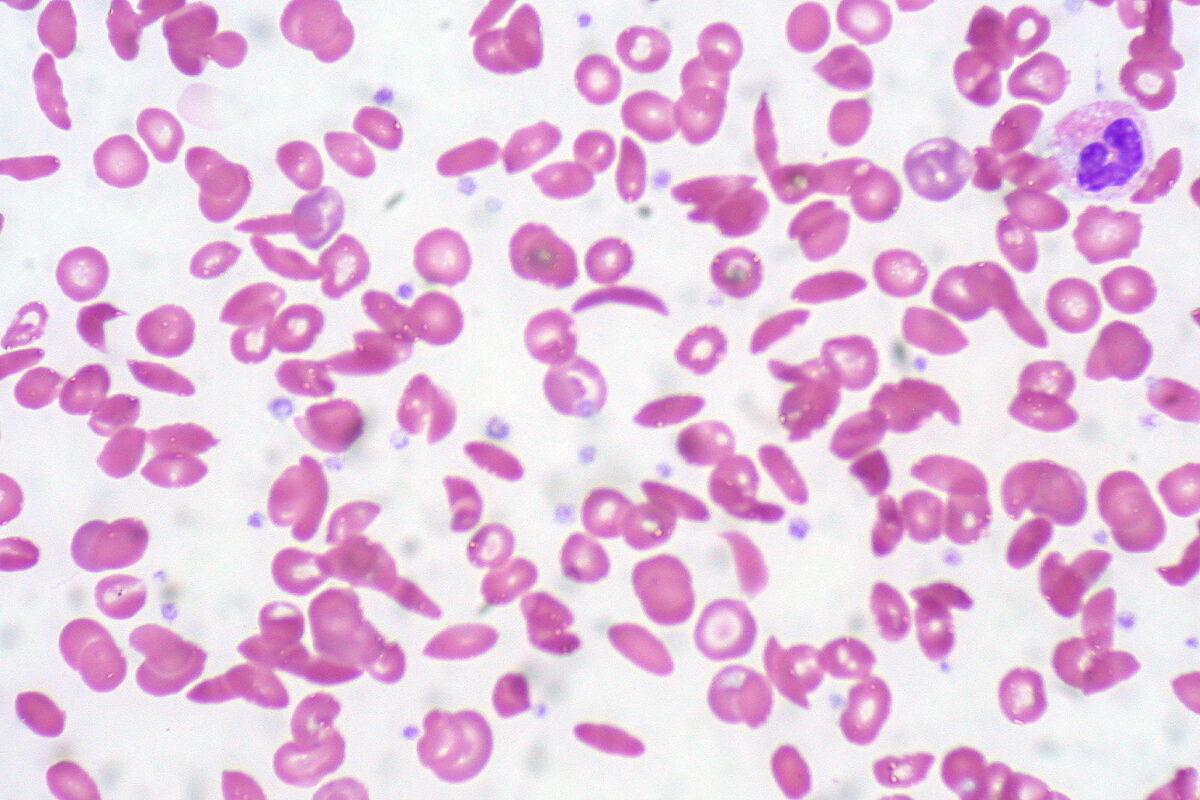
Overview Definition Sickle cell disease (SCD) is a group of genetic disorders that cause an abnormal Hb molecule (Hb S) that transforms RBCs into sickle-shaped cells, resulting in chronic anemia, vasoocclusive episodes, pain, and organ damage. Epidemiology Etiology Pathophysiology Normal adult hemoglobin molecule (HbA1) consists of 2 pairs of chains called alpha and beta. Clinical […]
Thalassemia
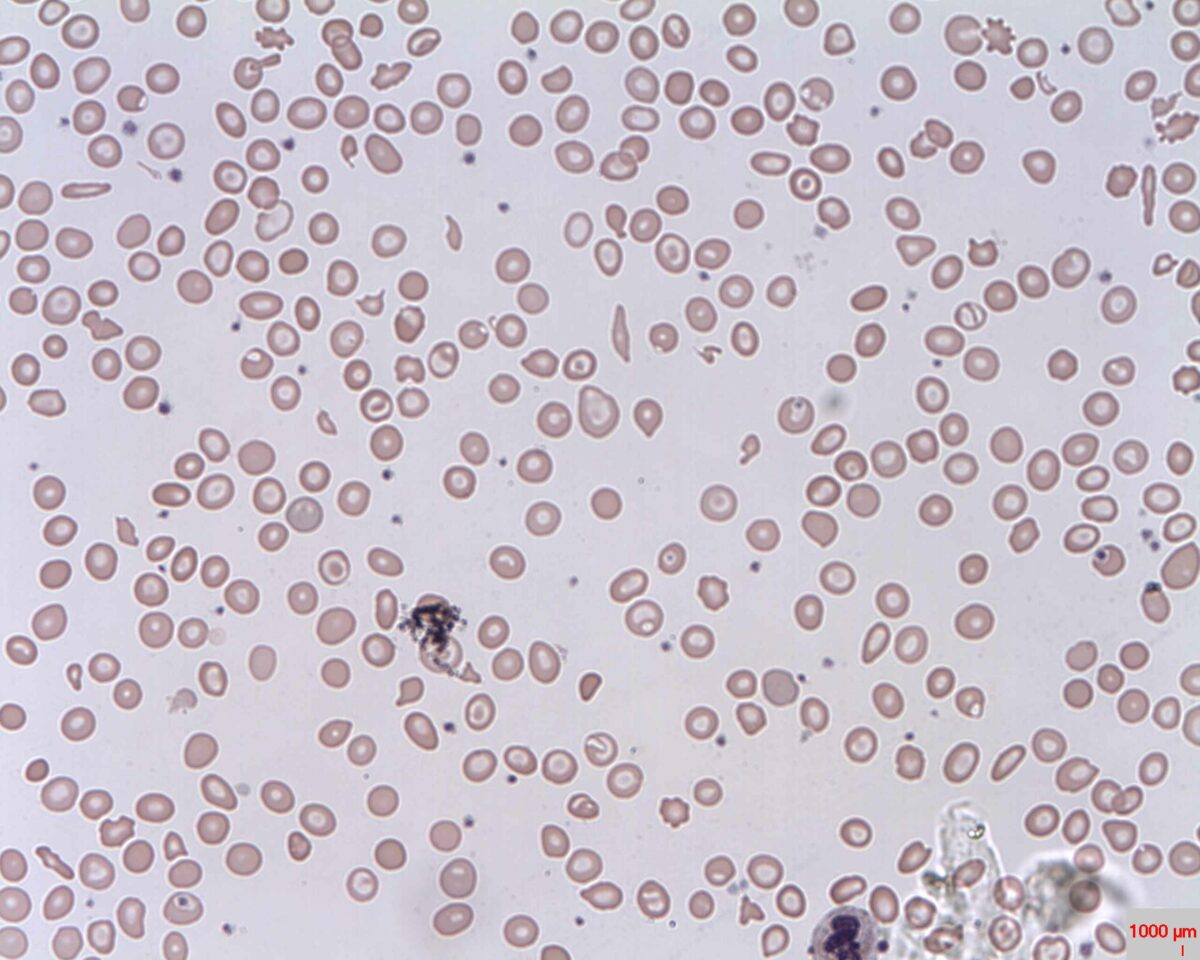
Overview Disease characteristics Epidemiology Etiology Table: Etiology of α-thalassemia Number of genes deleted/genotype Disease Outcome 1(αα/α-) α-Thalassemia minima Silent carrier 2 (α-/α-; trans) (αα/–; cis) α-Thalassemia minor Trait (2=Trait) Mild anemia Cis; worsens with generations 3 (α-/–) HbH (4 β chains) Moderate-to-severe anemia 4 (–/–) Hb Barts (4 γ chains) Hydrops fetalis (incompatible with life) […]
Lymphocytes: Histology
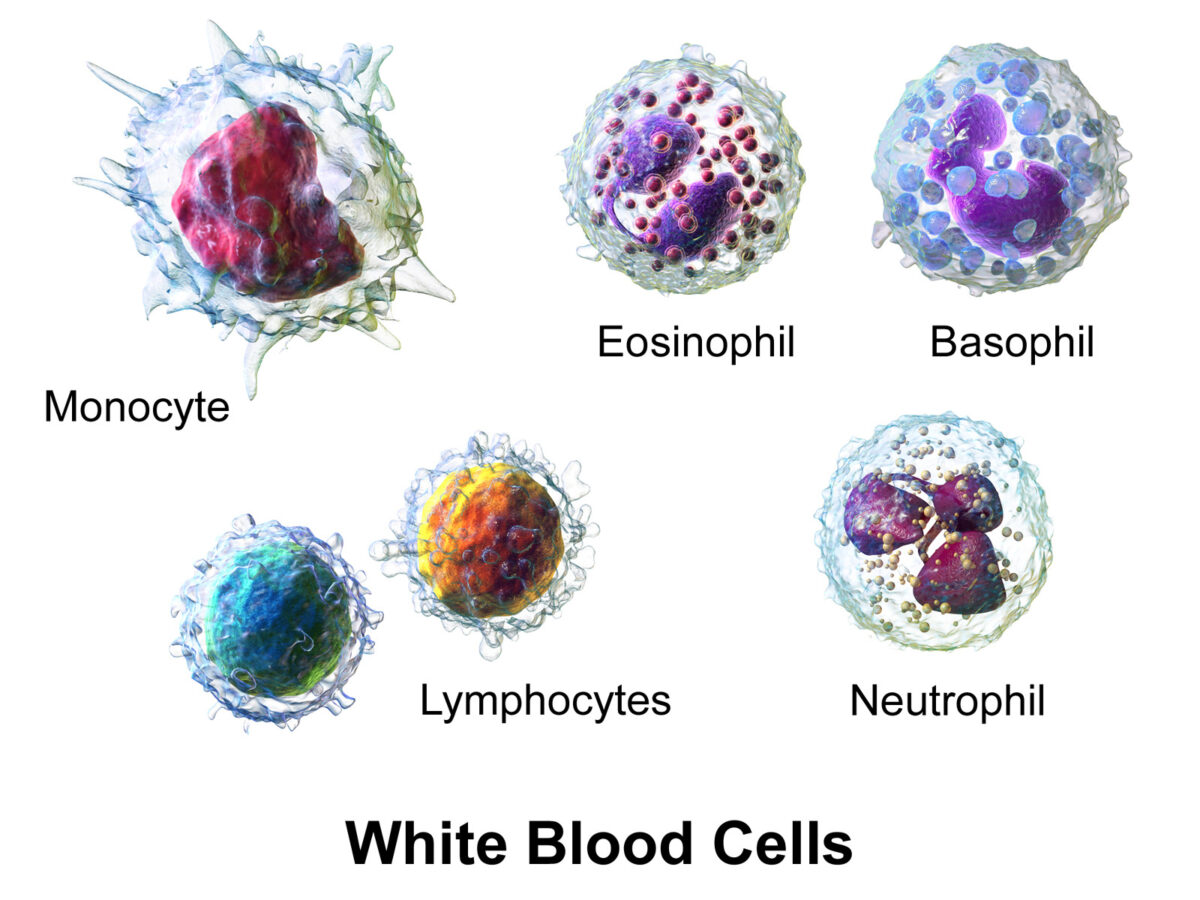
Overview Definitions and description Lymphocytes are blood cells involved in immune response, which arise from the common lymphoid progenitor (CLP). Description: 30% of circulating WBCs Spherical and/or ovoid cells Diameter: 6–15 μm Lifespan: weeks to years Belong to a heterogeneous group of cells called leukocytes (WBCs), which are divided as follows: Granulocytes: derived from the […]
Iron Deficiency Anemia
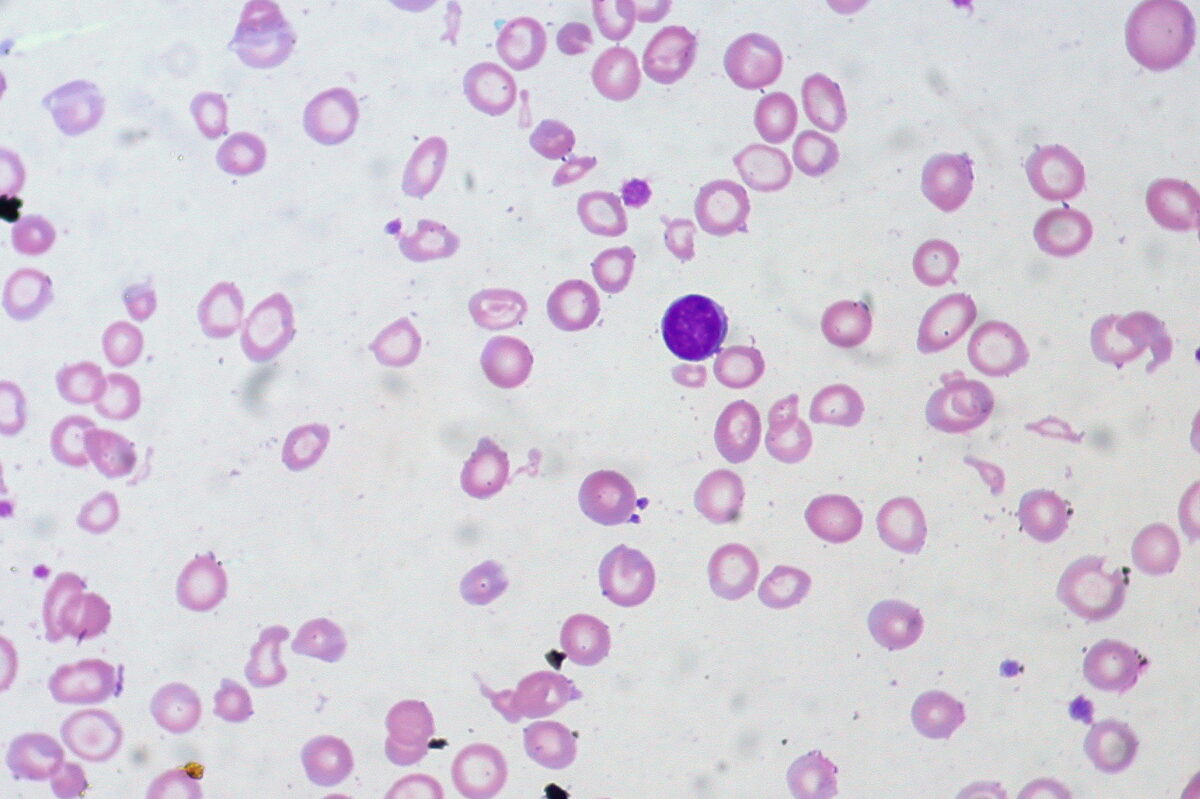
Overview Definition Anemia is defined as a hemoglobin level that is 2 standard deviations below the mean for age, sex, and ethnicity. Because iron is a fundamental building block of hemoglobin, a deficiency in this mineral can result in decreased hemoglobin production and anemia. Epidemiology Most common cause of anemia worldwide (50% of all anemias) […]
White Myeloid Cells: Histology
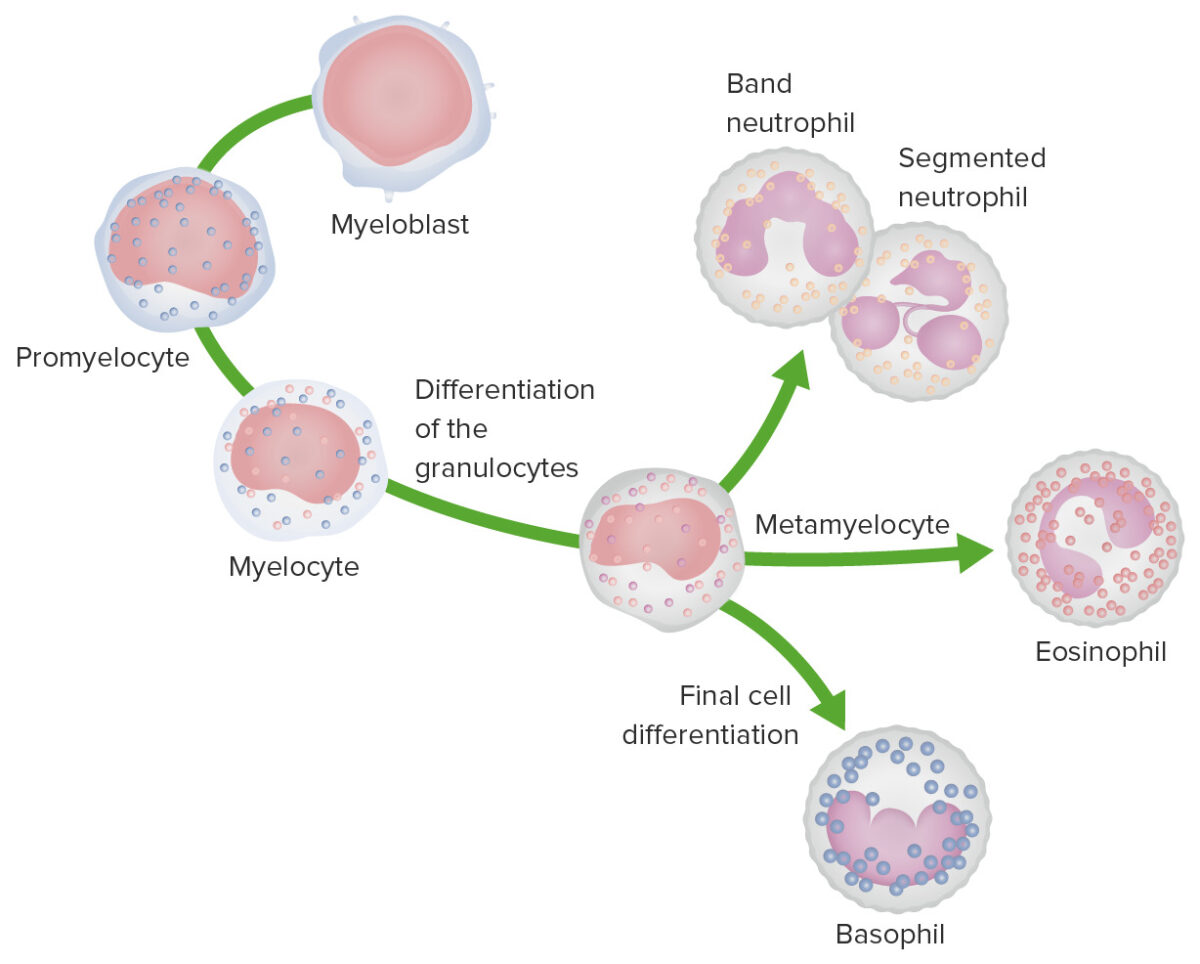
Overview Definition White myeloid cells are leukocytes developed from the common myeloid progenitor (CMP), which is derived from hematopoietic stem cells (HSCs) of the bone marrow. Cell description Table: Cell description of agranulocytes Type Nucleus Granules Characteristics and functions Monocyte (3%–7% of differential count) Kidney shaped (indented or C shaped) None Characteristics: Lifespan: hours to […]
Erythrocytes: Histology
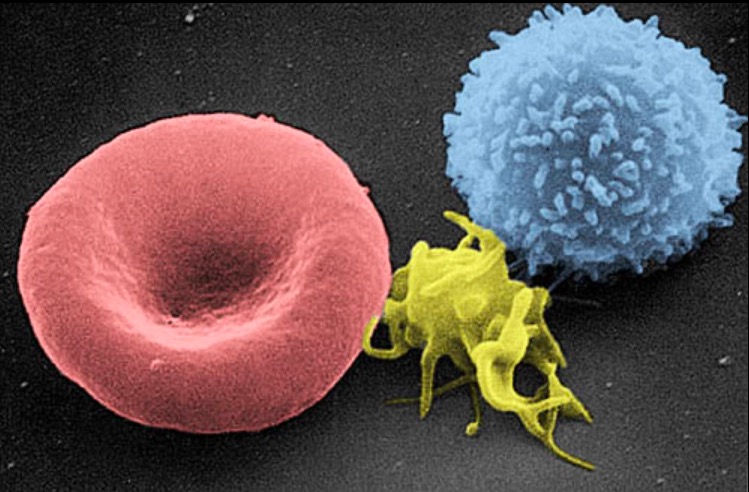
Overview Definition and description Erythrocytes, also called red blood cells (RBCs), are terminally differentiated structures lacking nuclei but filled with oxygen-carrying hemoglobin. Erythrocytes are the most abundant cells in the blood. Structure Erythropoiesis RBC production Stages of erythrocyte differentiation Regulation Table: Regulation of erythropoiesis Cytokines and growth factors Activities Source SCF Stimulates all hematopoietic progenitor […]
Platelets: Histology
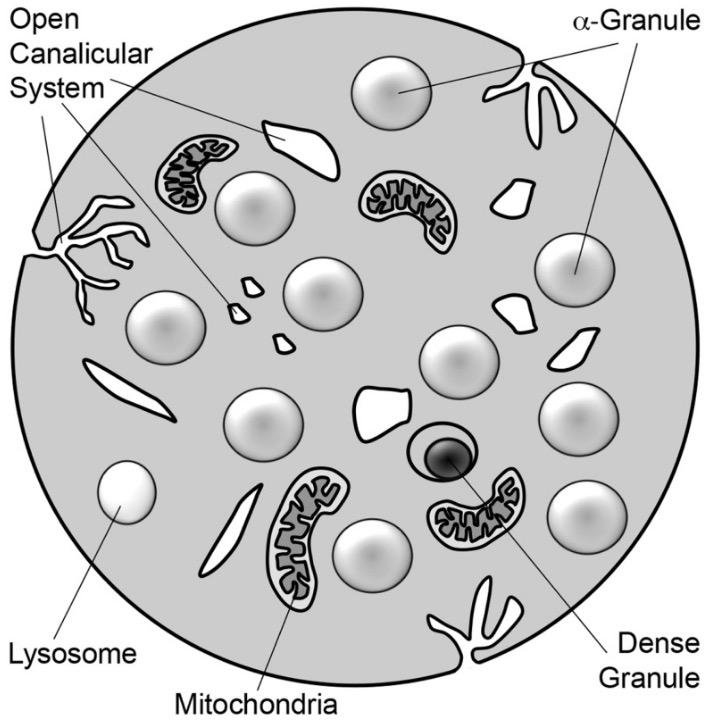
Overview Definition Platelets are small cell fragments without nuclei, but with a variety of organelles. Platelets are involved in primary hemostasis by adhering to damaged blood vessels and aggregating with one another (platelet plug). Description: Diameter: 2–3 µm Lens-shaped biconvex discoid Normal count: 150,000–450,000 platelets/µL Lifespan: up to 10 days Structure Outer membrane: Receptors facilitate […]
Paroxysmal Nocturnal Hemoglobinuria
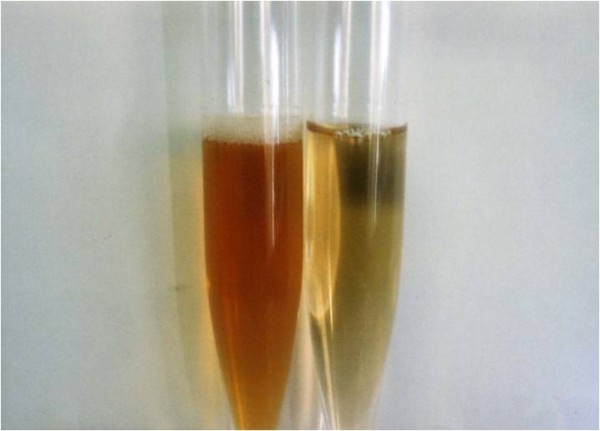
Overview Epidemiology Etiology Classification Classic paroxysmal nocturnal hemoglobinuria (PNH): PNH in the setting of a specified bone marrow disorder: Subclinical PNH (PNH-sc): Pathophysiology Genetics PIG-A gene (normal physiology): PIG-A gene (mutation): Bone marrow failure Anemia Neutrophil involvement Neutrophils also exhibit deficiency of GPI-APs: Platelet involvement Platelet-mediated factors include: Thrombophilia and thrombosis Thrombosis in unusual sites […]
Von Willebrand Disease

Overview Definition Von Willebrand disease (vWD) is a bleeding disorder caused by deficiency or dysfunction of the von Willebrand factor. Epidemiology Classification and etiology Table: Classification and etiology of vWD Type Etiology Pathologic mechanism Inherited Type 1 Autosomal dominant inheritance Partial quantitative deficiency of vWF Caused by mutations that lead to decreased secretion and increased […]